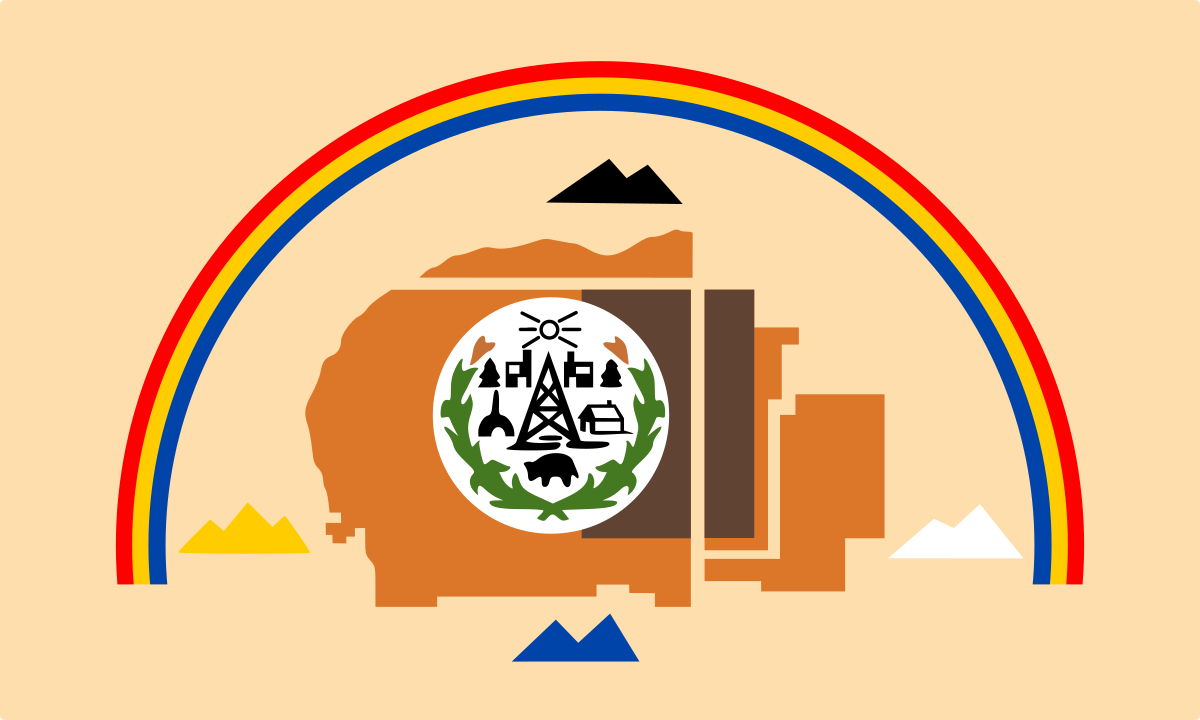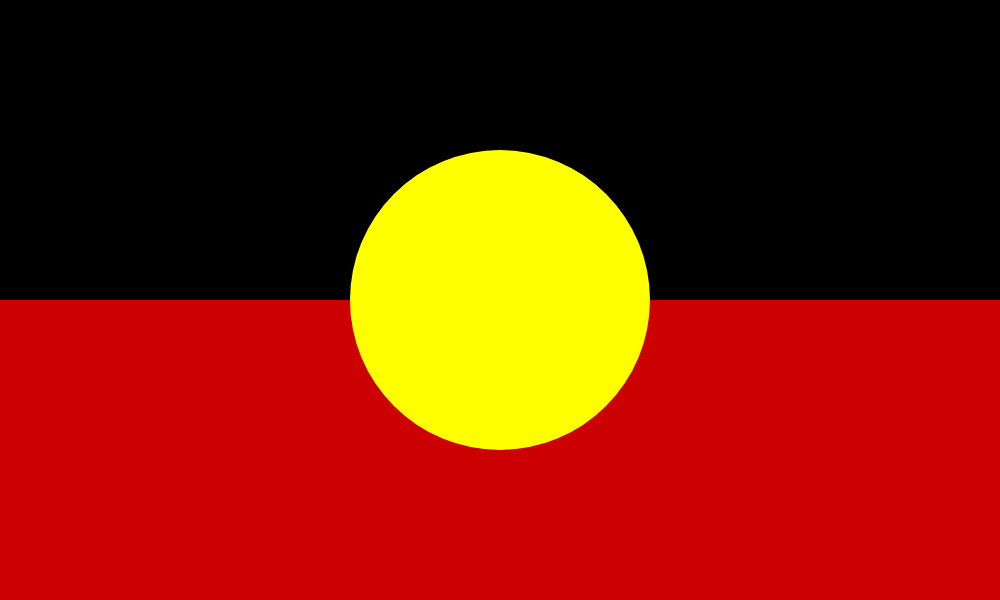The Navajos are speakers of a Na-Dené Southern Athabaskan language which they call Diné bizaad (lit. 'People's language'). They refer to themselves as the Diné, meaning (the) people. The language comprises two geographic, mutually intelligible dialects. The Apache languages are closely related to the Navajo Language; the Navajos and Apaches migrated from northwestern Canada and eastern Alaska, where the majority of Athabaskan speakers reside.Additionally, some Navajos speak Navajo Sign Language, which is either a dialect or a daughter of Plains Sign Talk. Some also speak Plains Sign Talk itself.
The Navajo religion teaches that they traveled through three or four worlds beneath this one, emerging into this world in southwestern Colorado or northwestern New Mexico. The gods created the four sacred mountains–Blanca Peak and Hesperus Peak in Colorado, Mount Taylor in New Mexico, and the San Frnacisco Peaks in Arizona. The mountains serve as supernatural boundaries, within which all was safe and protected.
Scholars still debate when the Navajo entered the Southwest. Most anthropologists agree the Navajo were spread through northern New Mexico, southern Utah and northern Arizona by the end of the 1500’s.
By 1525 A.D., the Navajo had developed a rich culture in the area near present day Farmington, New Mexico. The arrival of the Spanish in the 16th century introduced sheep, goats and horses to the Navajo. The Navajo flourished and migrated via extended family units into northern Arizona and southeastern Utah. Around 1700, and possibly as early as 1620, the Navajo moved into the San Juan River area of Utah in search of pasture land for their sheep and goat herds. Because the San Juan River was one of the few sources of water in Navajo territory, many Navajo planted fields of corn, beans, and squash on its floodplains.
A conflict arose between the Spanish and Pueblo peoples known as the Pueblo Revolt. During this time, Pueblo Indians had experienced enough of Spanish oppression and fought the Spanish, ejecting them from Pueblo land. When the Spanish returned around 1680, the Pueblo Indians sought refuge among the Navajo. The Navajo welcomed the Pueblo Indians and adopted some of their cultural values.
In the late 18th century, the Spanish, intent on conquering the Southwest, were in conflict with the Navajos. The Spanish formed alliances with the Comanches and Utes to weaken the Navajos.
By the time the U.S. acquired the southwest in 1848, the Navajo were among the richest Native Americans with large herds, some of which had been acquired during raids. Due to increasing tensions with white settlers in the area, in 1863, the U.S. Army, under the command of Christopher “Kit” Carson, destroyed the Navajo’s strength using a scorched earth policy. Carson forced the surrender of the Navajo and forcibly marched his captives 300 miles to Fort Sumner in central New Mexico, a journey known as The Long Walk. Hundreds died during the trek. Thousands more died during captivity as conditions at Fort Sumner imprisonment were overcrowded, undersupplied and unsanitary.
In 1868, the Treaty of Bosque Redondo was negotiated between Navajo leaders and the federal government allowing the surviving Navajos to return to a reservation on a portion of their former homeland.
The United States military continued to maintain forts on the Navajo reservation in the years after the Long Walk. By treaty, the Navajos were allowed to leave the reservation for trade, with permission from the military or local Indian agent. But economic conflicts with non-Navajos continued for many years as civilians and companies exploited resources assigned to the Navajo. The US government made leases for livestock grazing, took land for railroad development, and permitted mining on Navajo land without consulting the tribe.
During the time on the reservation, the Navajo tribe was forced to assimilate into white society. Navajo children were sent to boarding schools within the reservation and off the reservation. The first Bureau of Indian Affairs (BIA) school opened at Fort Defiance in 1870. Once the children arrived at the boarding school, their lives changed dramatically. European Americans taught the classes under an English-only curriculum and punished any student caught speaking Navajo. Other conditions included inadequate food, overcrowding, required manual labor in kitchens, fields, and boiler rooms; and military-style uniforms and haircuts.
The Indian Termination Policies, an official policy directive of the United States government from 1940 to the early 1960s and directed by multiple executive administrations (both Democrat and Republican), uranium mining operations were established across Navajo tribal lands. Although Navajo workers were initially enthusiastic about employment, the U.S. government appears to have been aware of the harmful risks associated with uranium mining since the 1930s and neglected to inform the Navajo communities.
Both the open and other, now abandoned, uranium mines have continued to poison and pollute land, water and air of Navajo communities today.
Nowdays the Navajo Nation is the largest federally recognized tribe in the United States with more than 399,494 enrolled tribal members as of 2021. additionally, the Navajo Nation has the largest reservation in the country. The reservation straddles the Four Corners region and covers more than 27,325 square miles (70,000 square km) of land in Arizona, Utah, and New Mexico. The Navajo language is spoken throughout the region, and most Navajos also speak English.
In 1923, a tribal government was established to help meet the increasing desires of American oil companies to lease Navajoland for exploration. Navajo government has evolved into the largest and most sophisticated form of American Indian government.
The Navajo Tribal Council was re-organized in 1991 into a three-branch government — executive, legislative and judicial — patterned after the U.S. Government. The Navajo council has 88 delegates representing 110 communities.
The Navajo Nation flag depicts the outline of the Navajo Nation in copper; the original 1868 reservation border is shown in dark brown. The four sacred mountains are shown in their cardinal directions. The rainbow symbolizes Navajo sovereignty, while the sun above two cornstalks and animals shows the traditional economy. Between a hogan and modern house, an oil derrick references another aspect of the Navajo economy.
The Indigenous Paleolithic of the Western Hemisphere
Megathreads and spaces to hang out:
- ❤️ Come listen to music and Watch movies with your fellow Hexbears nerd, in Cy.tube
- 💖 Come talk in the New Weekly Queer thread
- 💛 Read and talk about a current topics in the News Megathread
- 💚 Come and talk in the Daily Bloomer Thread
- ⭐️ September Movie Nominations ⭐️
reminders:
- 💚 You nerds can join specific comms to see posts about all sorts of topics
- 💙 Hexbear’s algorithm prioritizes comments over upbears
- 💜 Sorting by new you nerd
- 🌈 If you ever want to make your own megathread, you can reserve a spot here nerd
- 🐶 Join the unofficial Hexbear-adjacent Mastodon instance toots.matapacos.dog
Links To Resources (Aid and Theory):
Aid:
Theory:



jurassic park is about russia reentering the capitalist world after the collapse of the soviet union
jurassic park is about being transgender
jurassic park is secretly a feminist masterpiece??? not clickbait
jurassic park is about the horror of an absentee father
jurassic park is about the divergence between the new wave and punk movements in the late 70s
jurassic park is a documentary
jurassic park is a movie
jurassic park is about how you gotta know your rights as a laborer and how unionizing can protect you
jurassic park is a neo-noir masterpiece
jurassic park is like one of those twilight zone episodes where rod serling comes out at the end and says "there's no moral, that was pretty fucked up right?"
gonna be honest i have no idea what this bit is. i'm bailing here
It was a good bit and you were correct on every count
thank you for your support :rat-salute:
I was at least 5 replies deep before I realized you were replying to yourself, which I'd prefer to think says more about your skillful posting than my reading comprehension
thank you, i'm a posting genius
You're doing a bit, but here's a pretty compelling video about the gender politics of Jurassic Park. The channel has a series about the politics of different dinosaur movies and they're way better than they should be.
https://m.youtube.com/watch?v=5hCuv16pzjs&pp=ygUOc2F1cmlhbiBjaW5lbWE%3D
this one was tongue in cheek but i actually put thought into it. the way the men are put into vulnerable and sexualized positions or have character arcs about learning to like kids is neat
actually all but one of the things i claimed jurassic park was about are things that i legit thought about the last time i watched it
The trans thing is there in ways as well. The movie does also have some patriarchal overtones with Grant's arc being basically learning to be a father without becoming one literally. But the whole dinosaurs doing literal sex changes, the double female ended seatbelts, the Dennis Nedrey 'one of the little brothers ' scene. It's a Spielberg movie and the book doesn't really have any of these potential allegories, it really pulls in a lot of directions. A lot of this I got from the video I sent. Their one on the Dinosaurs TV series is fantastic and super high effort as well.
yeah the only thing i posted that i don't believe at least a little (other than the documentary one) is the one about the punk/new wave split. there is a lot going on in that movie, and the gender stuff at least is definitely intentional.
I'm a walking encyclopedia of punk and punk offshoot music, my favorite musical release ever is a demo recorded in a boom box in a squat in Norwich in 1986 and was really wracking my brains to make up some connection to J Park
lmao sorry i made that one up. i'd love to hear that, i do really like punk. been going to some killer local shows lately that i will not go into more detail about for fear of doxxing myself
the one about the post cold war is just based on some comments they made about the dinosaurs that felt very end of history lib. it's not something i have any real thoughts on either. but it is something i think i could argue if i so desired
As far as the gender stuff being intentional, I don't think the intentionality goes all that deep aside from 'life finds a way' and the patriarchal bits about fatherhood and stuff, it's Spielberg, let's not give the dude too much credit. The book it's based on is more misogynistic in how it treats female characters and is very Bro Science. The gender aspects of the dinosaurs aren't really as present because it's emphasized more in the book how much these aren't dinosaurs or natural creatures but weird facsimiles whipped up for entertainment with no place in nature.
yeah i don't wanna act like it's actually some kind of feminist masterpiece that showcases spielberg's encyclopedic knowledge of gender theory, i just meant it is intentionally doing things with those themes that allows those readings to exist
Hope you don't mind me jumping in, but I watched the video and had some thoughts.
So I was reminded of Duel, Spielberg's first mainstream success. An early 70's movie where a truck driver terrorizes a travelling businessman on the highway. One of the themes of the movie is differing and changing images of masculinity. The protagonist is an urban professional who is intimidated by the blue collar men he finds himself around and in conflict with.
I think Spielberg is capable of approaching masculinity as something that is and should change. I think while the traditional family unit is held in high regard by Jurassic Park, Spielberg is consciously showing the role of the father less as patriarch and more as an partner, at least in the sense that equality was commonly accepted at the time. Sattler is shown to be equally capable of knowledge work while Grant is shown at the end as engaging in pseudo-fatherhood not as a domineering force, but as a nurturing and caring one.
All that to say, yes, I think Spielberg is both willing and able to engage with gender as social construct, if only through the frame of contemporary ideas of masculinity.
I found a YouTube link in your comment. Here are links to the same video on alternative frontends that protect your privacy:
Stop trying to make that happen. It ain't gonna.
Dennis Nedry misgenders a dinosaur and gets a face full of venom.